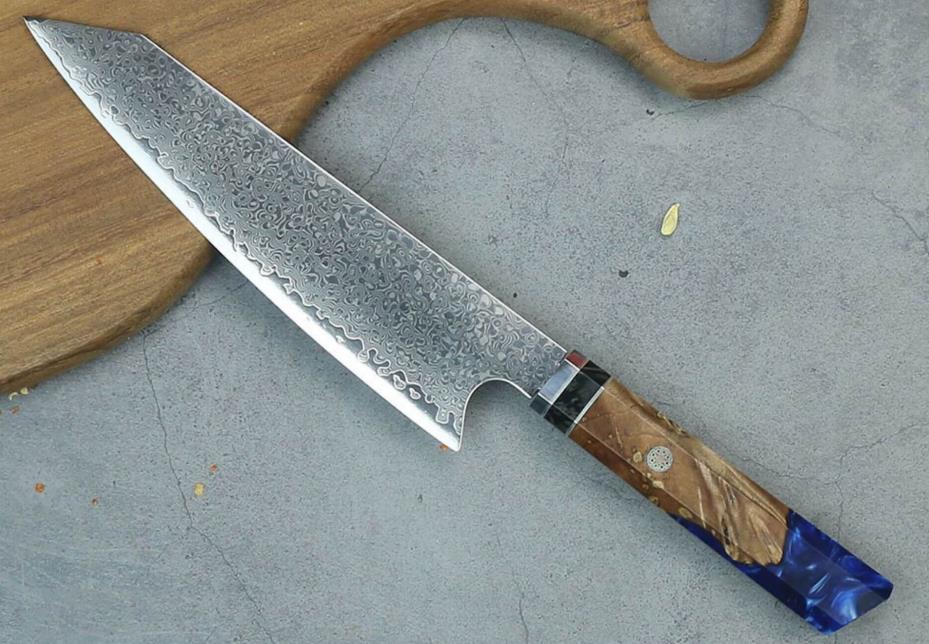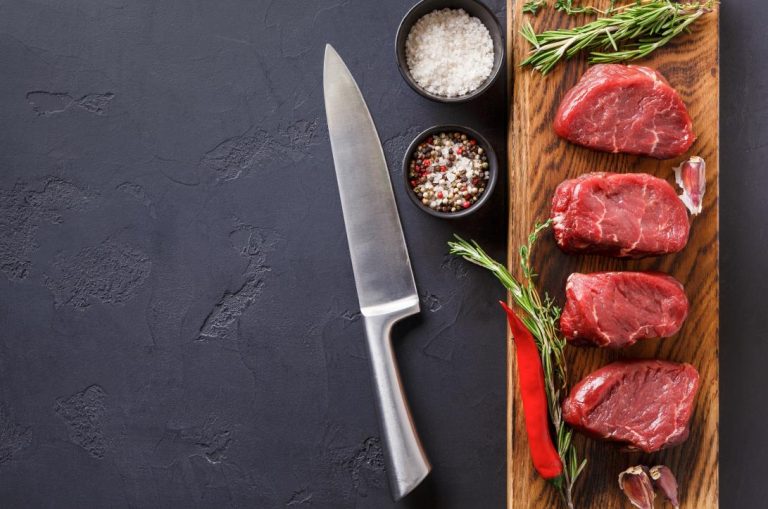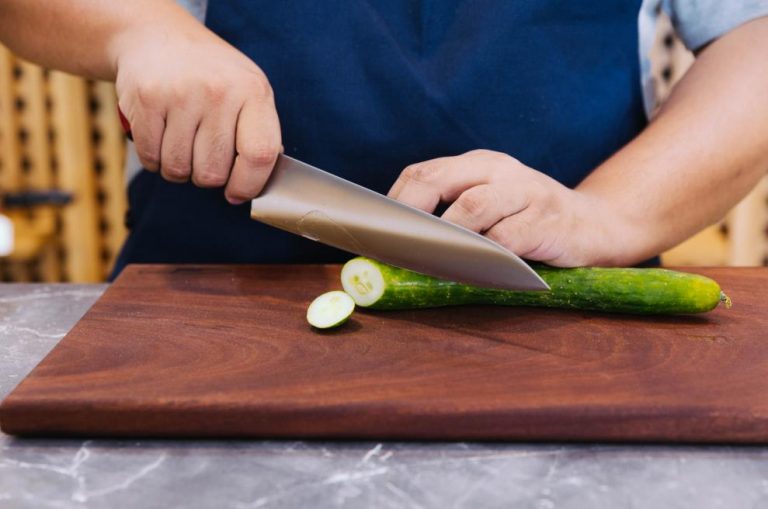For a Japanese chef, their knife is an extension of their body. Their dedication on knife design and culinary is a sign of respect for superior craftsmanship.
You’ve heard about a Gyuto, you’ve heard about a Santoku, and you’ve probably heard of a Deba. Today, we’re straying a bit from the most popular choices to showcase the Kiritsuke knife, used by some of the most experienced executive chefs.
If you were looking to expand your Japanese knife inventory, you’d probably love this one—you and every sushi lover out there.
What is a Kiritsuke knife?
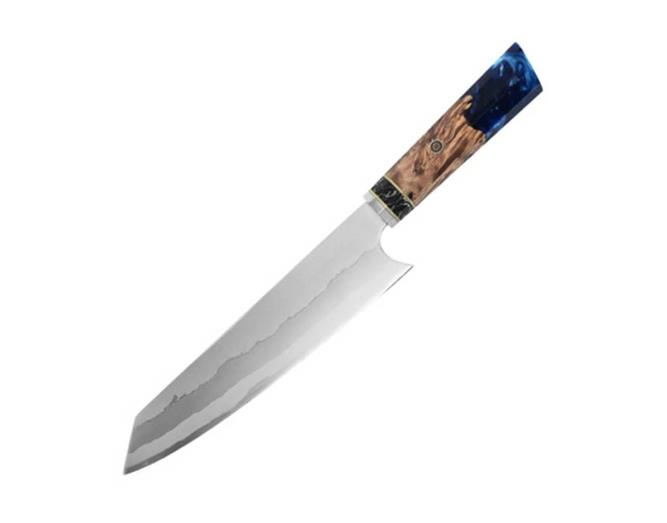
Throughout history, Japanese artisans have adapted their blades to suit local culinary preferences. Since these vary a lot from one region to another, Japan ended up with approximately 200 types of knives.
The authentic Kiritsuke knife featured a long, single-bevel blade and was traditionally used as an all-purpose knife.
Its appealing design made it susceptible to Western influence, and, as a result, modern chefs have an extensive range of Kiritsuke sizes and variations to choose from.
Kiritsuke name meaning
Visually, the Kiritsuke knife is a hybrid between a yanagi blade, used for slicing fish extremely thin, as for sushi and sashimi, and an usuba.
“Yanagi” translates as “willow tree,” referencing the blade’s similarity to the willow leaf, while “usuba” means “thin blade.” The latter is used for peeling vegetables, cutting them very thinly, or julienne style.
In literal translation, “kiritsuke” means “to slit open,” which is an apt name when considering the blade’s design.
Kiritsuke design
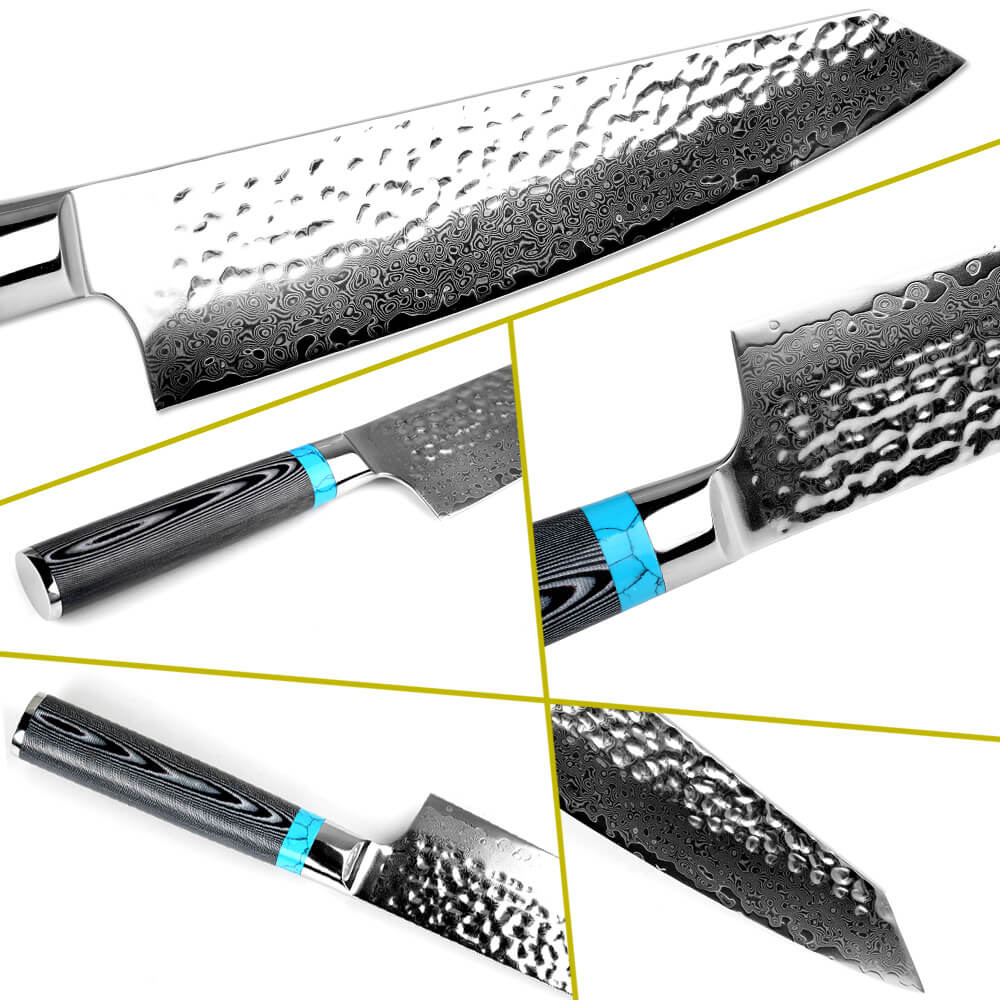
This Japanese knife inherited the long blade of a Yanagiba and the straight cutting edge of an Usuba. Combining the two, you get a versatile knife toyou can use for fine, even slicing, and delicate chopping.
Their length varies between 240 to 330 mm, with a 270 mm blade being suitable for most people. This long, flat blade ends in an angled, “reverse tanto,” or clip point tip, offering the user a longer cutting belly.
The reverse tanto profile makes its point very nimble, allowing for delicate slitting, while the flat edge is great for chopping and push cutting.
Like most traditional Japanese knives, the Kiritsuke features a single-bevel edge, which means the blade is sharpened on only one side.
Buy Wholesale Knives and Start Scaling up with Us Today
Contact us and connect with a sales rep to get a free quote.
Kiritsuke variations
Due to Western influences, you’ll often see variations of the Kiritsuke knife, making it more accessible to buyers of all types.
One of the most popular variations is the Kiritsuke Gyuto, also called a K-tip Gyuto. Widely regarded as the Japanese version of a Western chef’s knife, the K-tip Gyuto features a reverse tanto tip on a wider blade with a slightly angled edge.
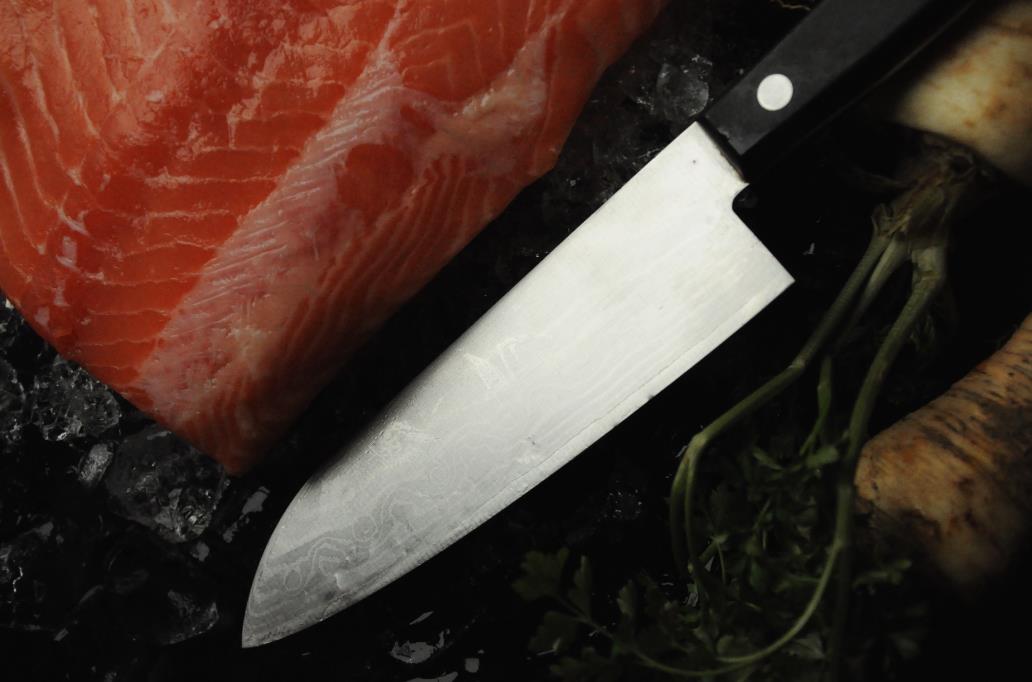
These knives make for great all-rounders and are generally easier to use than knives with completely flat profiles, such as the traditional Kiritsuke.
Another variation is the Kiritsuke Yanagiba, which closely resembles a traditional Yanagi blade, with the sole difference being the Kiritsuke’s signature reverse tanto tip. These knives are called Kengata Yanagi and are generally more precise than classical Yanagiba knives.
Kiritsuke knife uses
Also known as the Japanese master chef knife, the Kiritsuke has a certain symbol status and requires a bit of experience to use correctly.
In fact, due to its learning curve, this blade is usually reserved for the head chef in many restaurants, with many amateur chefs keeping it at a safe distance.
Of course, with a little bit of time and patience, everyone can learn how to use this tool effectively, so it’s not uncommon for home cooks to acquire it in order to hone their skills.
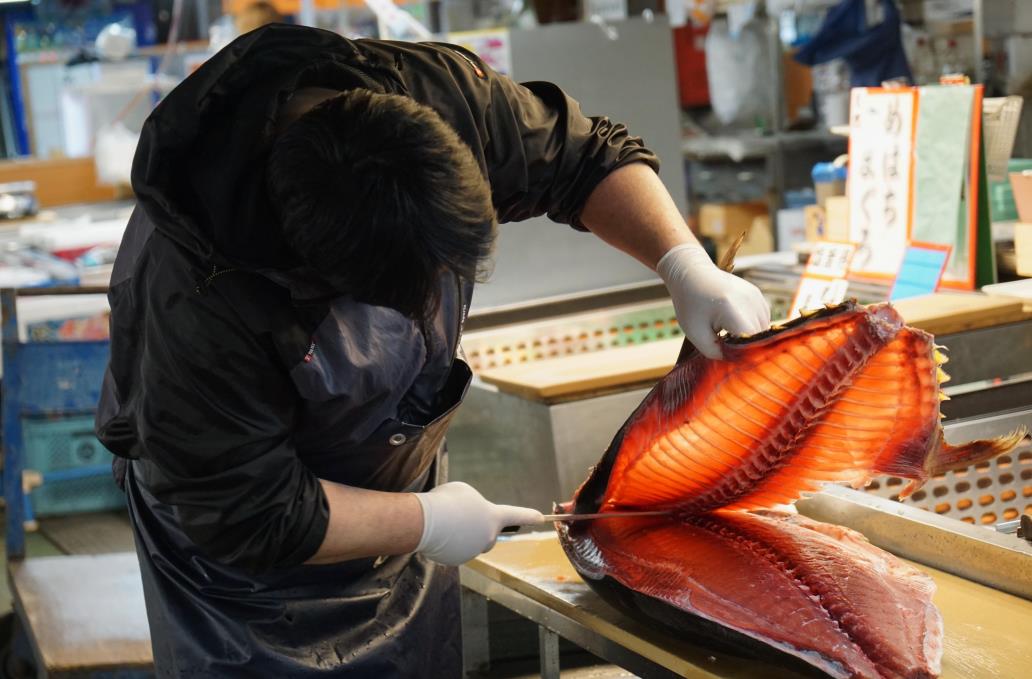
The long, thin blade of a Kiritsuke makes it an ideal choice for delicately slicing fish such as mackerel, tuna, or salmon. It is typically used for cutting fish and seafood against the grain (diagonally) or filleting skinned fish like trout or red snapper.
Its flexible blade and nimble point make it a perfect choice for skinning and deboning fish and poultry.
Using the full power of an experienced chef’s skill, this knife can also cut very thin slices of vegetables like cucumbers and tomatoes, but it also lends itself well for chopping herbs.
What is a Kiritsuke knife used for?
- Thinly slicing fish, as for sushi or sashimi
- Delicately slicing and chopping vegetables for visually appealing dishes
- Skinning and deboning fish and poultry
- Finely chopping herbs for impeccable garnishes
What sets the Kiritsuke knife apart?
Among the types of Japanese kitchen knives, the Kiritsuke is not the most popular choice. Since it requires a proper technique to use at its total capacity, it is usually sought after by executive chefs or die-hard fans of Japanese cuisine.
Kiritsuke vs. chef’s knife
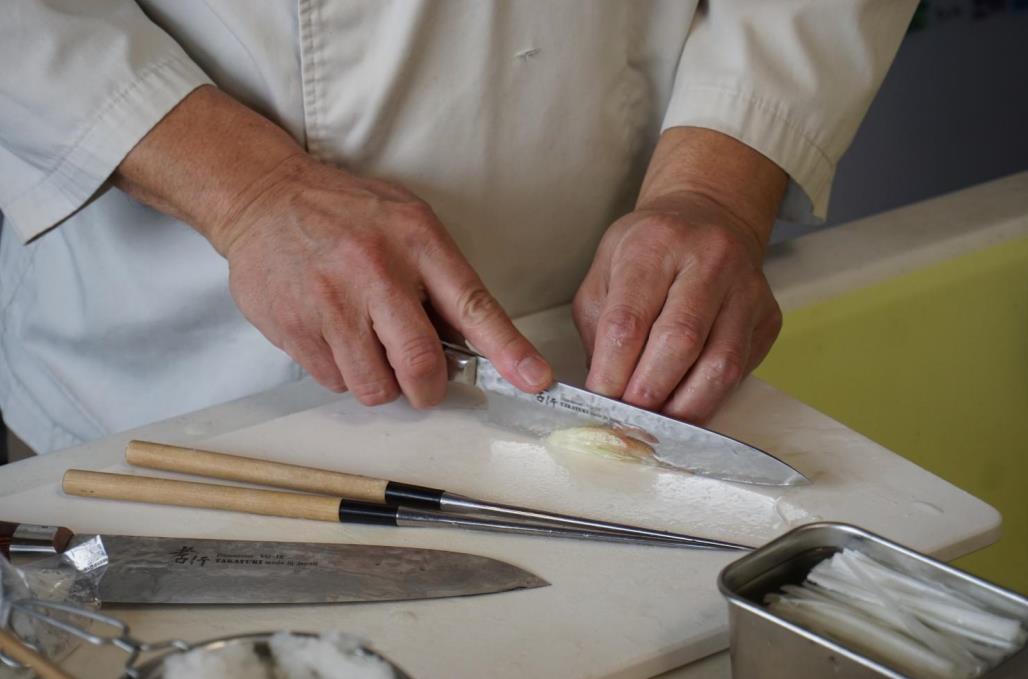
Comparing the Kiritsuke to a Western chef’s knife, you’ll first notice the massive difference in design. While the chef’s knife features a curved belly on a wider blade, the Kiritsuke has a flat profile.
As a result, a chef’s knife is more beneficial for cutting large pieces of vegetables and offers a higher versatility.
For someone spending a long time in the kitchen, which is required to switch from dicing veggies to deboning meat quickly, a chef’s knife makes for a more sensible option.
On the other hand, Kiritsuke’sa Kiritsuke’s angled tip and flat cutting edge allow for incomparable precision cutting. In addition, its design makes it easier to separate thin slices of fish or veggies from each other.
For this reason, it is the best choice for preparing specialty dishes, where the visual aspect is paramount. And so, you can understand why it has become a staple for professional chefs.
Kiritsuke vs. Gyuto
A Gyuto doesn’t differ much from a Western chef’s knife, except for the styling. It features a rounded belly which lends itself well to rock-chopping different foods. Its versatility and ease of use make the Gyuto a better choice for beginners.
In comparison, the Kiritsuke makes for an excellent choice for a push chop or thrust cutting motion, which experienced chefs more commonly use.
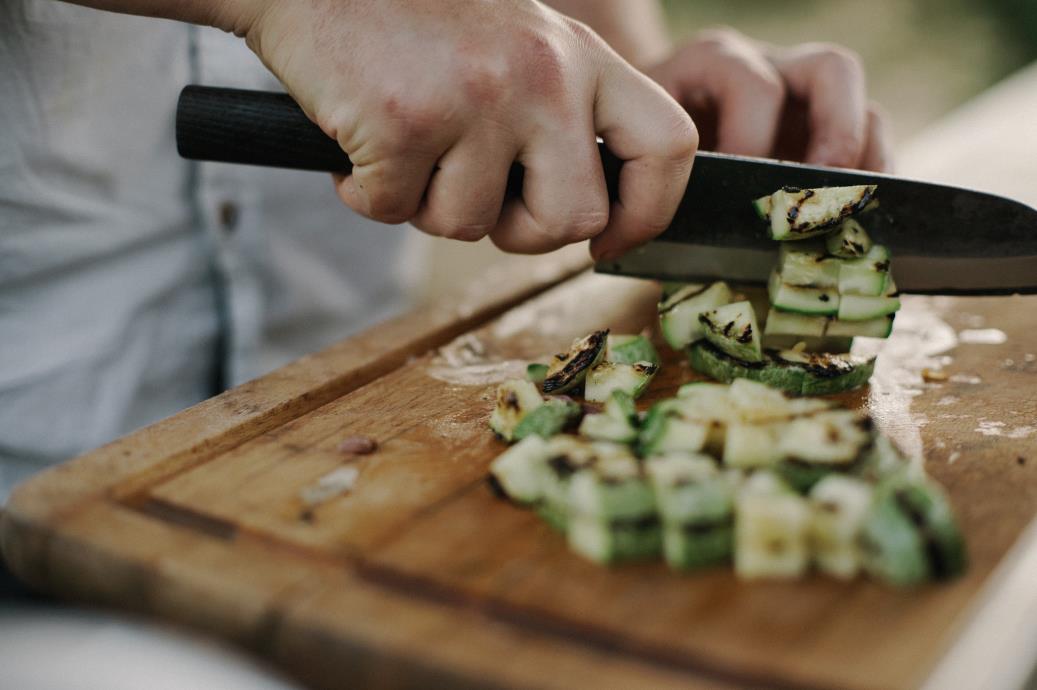
Kiritsuke vs. Santoku
You’ll be pressed to find a kitchen enthusiast who hasn’t heard of a Santoku knife before. This type of knife has been popularized by many professional chefs on TV, and it has convinced many users of its utility.
A Santoku is generally smaller and lighter than a traditional chef’s knife, featuring a thinner blade used for precision cutting.
It can slice, dice, and chop various foods, such as fish, meat, and even vegetables.
One of the main differences between a Kiritsuke and a Santoku is their size. A Kiritsuke is usually much longer, while Santokus are great for cooks who want to save space.
While the latter is a preferred choice for many due to its versatility, a Kiritsuke will still win the race regarding accuracy.
Would a Kiritsuke knife fit in your knife store?
Whether you should add a Kiritsuke knife to your inventory depends on personal preference. If your store caters to beginner cooks looking for the biggest bang for their buck, a Kiritsuke shouldn’t be your first choice.
Yet, if you’re focusing on a professional clientele, you can’t go wrong with this type of knife. Many cooks will look to acquire a high-quality Kiritsuke for its symbol status. Unfortunately, it is a more exclusive tool that won’t easily find its place in just about any kitchen.
Other professional chefs will be interested in this knife, so they can increase their skills or perfect their Japanese specialty dishes.
Another selling point of the Kiritsuke knife is its signature look. The rectangular design is impressive and makes for a cherished addition to anyone’s collection.
If your clientele values unique designs, they are unlikely to look past the beautiful Kiritsuke knife.
Buy Wholesale Knives and Start Scaling up with Us Today
Contact us and connect with a sales rep to get a free quote.
The type of customers who would buy a Kiritsuke
- Professional chefs
- Cooking enthusiasts looking to develop their skills
- Japanese cuisine enthusiasts
- Knife collectors
Kiritsuke maintenance
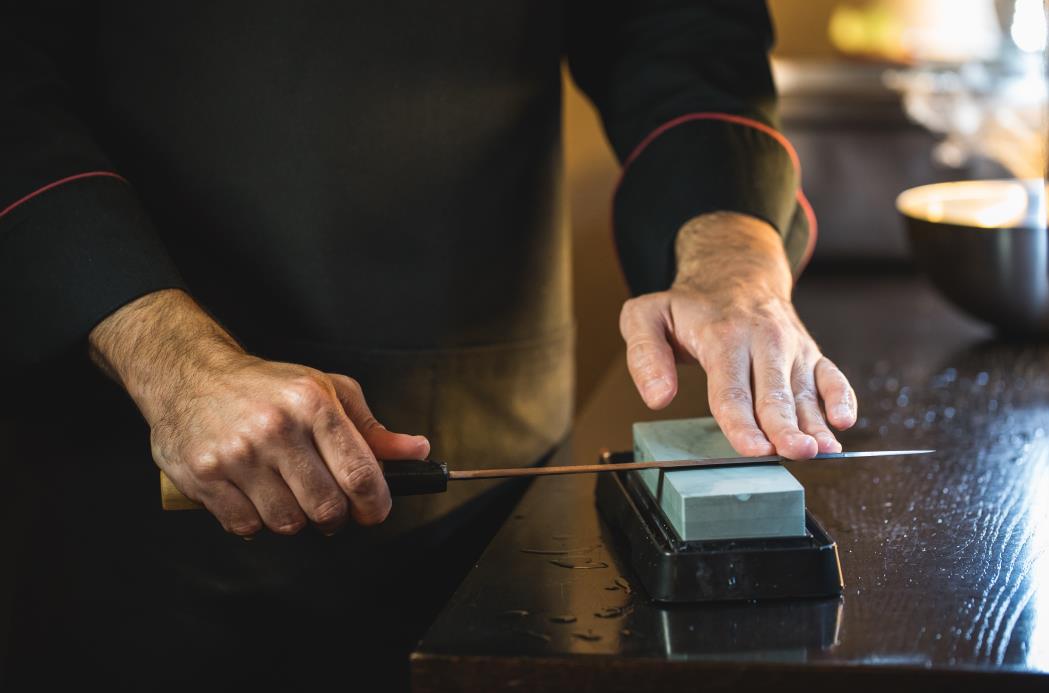
One reason the Kiritsuke isn’t such a popular choice for the regular cook is the required maintenance. This isn’t a knife you can throw in a dishwasher and forget. Instead, caring for it will need a little bit of time and effort.
Ideally, a Kiritsuke should be washed with warm, soapy water and dried with a soft towel immediately after use. A sheath should be used to protect its delicate blade, which should also be sharpened regularly to prevent it from getting dull.
In order to avoid oxidation, the blade should be regularly treated with mineral oil.
To sharpen this knife, one can use a whetstone or sandpaper. The Western-style honing steel should be avoided, as it can damage the delicate blade.
If you choose to add this knife to your offer, it would be wise to include some caring tips in the product description.
Additionally, you can offer high-quality oil and sharpening accessories as extras with every purchase.
Final word
Although there are plenty of more flexible options on the market, the Kiritsuke knife has a charm that’s hard to replicate.
It won’t often be the first choice of an amateur chef, but there are plenty of professionals out there who can unlock its true power. At its best, the Kiritsuke knife is the crowning glory of a chef who strives for culinary perfection.
At its worst, this knife makes for a lovely gift or a beautiful addition to a collector’s roster. Whether the Kiritsuke will bring a spike in your profits or not depends on your usual customers. Yet, if you’re mainly catering to professionals, you’ll make some of them really happy by adding this knife to your offer.
When you’re ready, make sure to check our knife catalog, where you’ll find a robust Kiritsuke collection. Contact us to request a quote and start selling Kiritsuke knives with us today.
